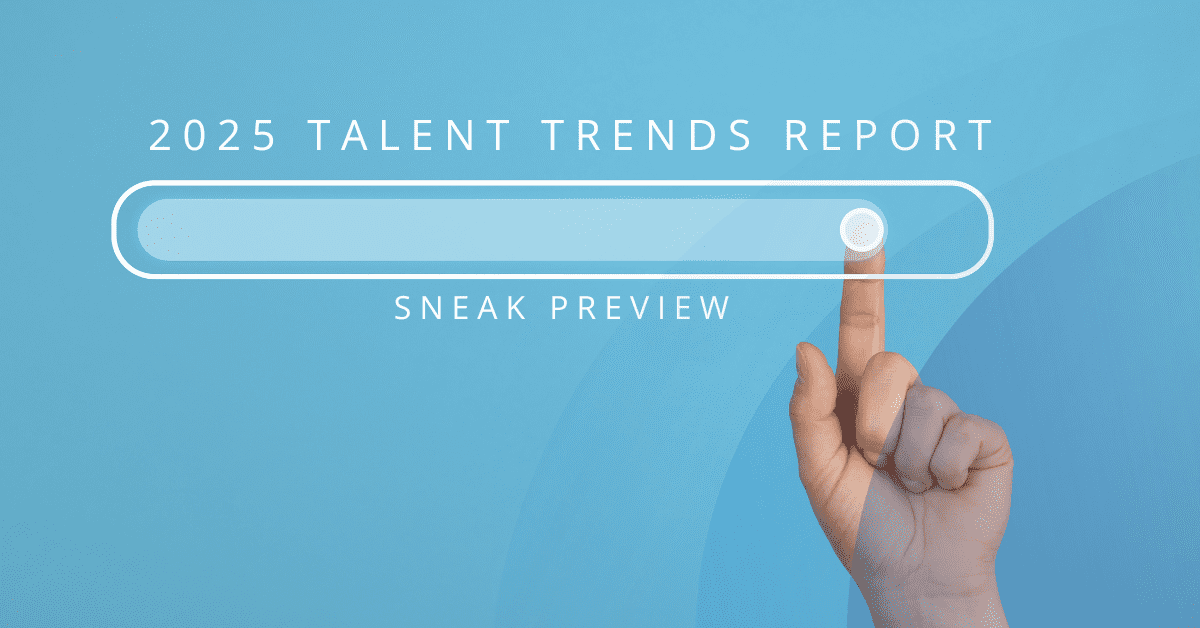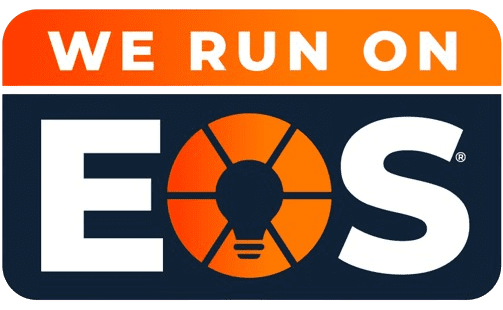2025 is a big year for The Omnia Group! In addition to celebrating our 40th anniversary, we’ll also be celebrating the release of our 4th annual Talent Trends report. Tapping into the wealth of expertise we’ve gained over four decades of helping our clients hire and retain top talent, we’ve honed the Talent Trends Survey to help identify what matters most to people in the talent sphere: what has changed, what has stayed the same, what’s catapulted forward in the minds of professionals in some industries, and what seems to be fading.
Here’s a sneak peek of some of our key findings:
Industries Chiming In
This year, the top five industries represented in the survey were:
- Manufacturing
- Technology
- Professional Services
- Healthcare Providers
- Education
This represents a slight shift in industry respondents from last year, with Education edging Insurance from the top five (though it is still in the top 10).
It’s exciting to hear more from other industries! The data they provide gives us an even broader range of insights into the challenges facing the talent space and how people are tackling them.
Small Companies Reporting
Once again, our largest group of respondents came from companies with 500 employees or fewer. While it’s always intriguing to see how the large companies are approaching their talent efforts, input from small companies offers unique benefits like…
- Agility: The smaller the organization, the greater the need and the ability to shift in response to changing economic forces, new technologies, and opportunities.
- Wide-Range knowledge: Larger companies tend to call for specialization – efforts need to be split among many, and people get to know their one area well. Conversely, smaller companies require individuals to shift among varying functions, which means more people are plugged in to the overall workings of the business.
- Different approaches to innovation: While large companies tend to have greater budgets for innovation, it can take time to introduce new ideas, simply due to the number of people who need to approve and incorporate them. Smaller companies need to be pickier about what they adopt, based on budget constraints, but they can implement plans more readily, and they have a bit more room for trying ideas out than larger companies.
- Quicker Results: With fewer employees, it’s easier to measure the success of a plan or goal and identify next steps.
A Peek at the Findings
Since helping our clients hire and retain top talent is Omnia’s main mission, we looked forward to hearing what our respondents had to say about holding on to employees.
Turnover
Not to give too much away before the report is published, but we saw an improvement in turnover numbers that indicates employees are staying with their companies longer.
Why it matters: Turnover costs! Check out Omnia’s Turnover Calculator to see how much. To quote a recent Omnia Blog, “High retention rates often indicate a healthy organizational culture where employees feel valued and are motivated to contribute to the company’s success.” It’s promising to see an increase in the number of people staying with their companies.
Talent Initiatives
- Internal Mobility: This year’s survey results show internal mobility holding steady as an important way to retain valued employees, with over 80% of respondents reporting internal growth as an option.
Internal mobility benefits both the company and the employee by maintaining critical skills and knowledge, reducing overall training time, keeping employees engaged, and offering them a feeling of security. Knowing your employers support your future growth naturally builds loyalty, too. - Enhanced Communication: More respondents report having regular one-on-one meetings with leadership this year over last year.
Leaders and managers who connect individually with team members provide ongoing opportunities to strategize, coach, brainstorm, and problem solve. This is also a crucial way to cultivate trust and keep track of goal accomplishment. - Collecting Data: One metric that’s lower this year is the number of employers who collect data when employees leave. It’s only a slight decrease from last year’s numbers, but it offers us an opportunity to point out how important it is to gather this information. There is no better way to find out the reasons for turnover than to ask the people leaving! It’s true, not everyone will answer, and some might not provide full disclosure, but it can’t hurt to ask.
Exit interviews can provide insight into day-to-day processes, work stressors, departmental dynamics, culture, and management concerns.
Use of AI
Another trend holding steady from our last survey is the use of AI. Around 18% of those surveyed reported their organization uses AI for some aspect of their talent strategy. Uses ranged from recruiting, hiring/selection, interviewing, and onboarding.
It’s surprising that we didn’t see an increase in AI use, since applications for it are cropping up all over the talent scape. However, with these new uses comes the discovery of concerns and potential pitfalls of relying too heavily on AI functions, which likely reflects the hesitation companies are showing to incorporate it.
Assessment Usage
This group of respondents reported a slight decline in the use of assessments in talent strategies. Interestingly, though, we saw a continuation of last year’s upward trend in employing assessments for personal growth.
Behavioral assessments, like the Omnia Behavioral Profile, provide essential insights to enhance your own development and professional growth. They’re especially helpful when you find yourself at a crossroads in your career, feel like you’re in a rut, or worse, begin to experience burnout. Most of us feel like we have a handle on who we are and what makes us tick, but seeing your strengths, preferences, and challenge areas laid out clearly on a report helps demystify what you need and the next steps to take.
Although the results showed a slight decrease among the respondent group using assessments for employee selection, it remains a popular use, and for good reason. Skill and behavioral assessments provide information about candidates and their fit with a job that can’t be inferred from a resume and interview. It’s like having a glimpse into the future, and it can result in substantial savings in turnover costs.
Further Exploration
The survey indicates more employees are staying longer, which highlights the need for companies to invest in engagement strategies, implement formal career development processes, and cultivate a healthy and empathetic work culture. Fostering strong communication is key, as is offering opportunities for personal growth, and embracing new technology. These are some of the issues we’ll be exploring in our 2025 Talent Trends Report. Stay tuned!
We’re so grateful for all the people who took time out of their busy schedules to take part in our annual survey. We look forward to offering a deep dive into all the data gathered and provide the information you need to supercharge your talent strategy.























